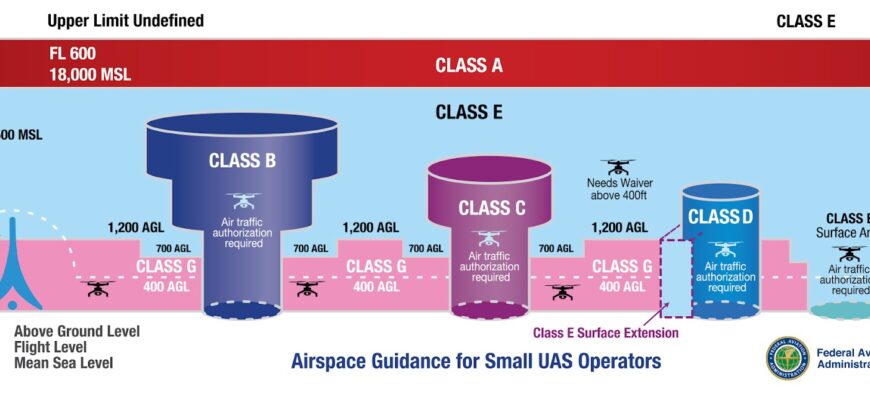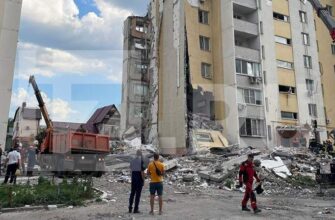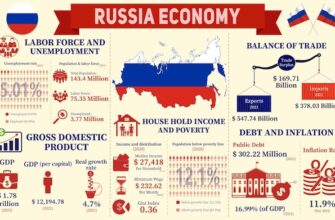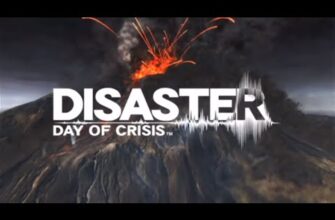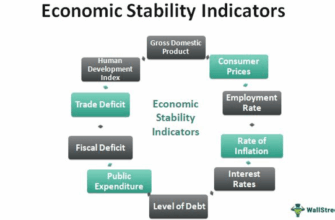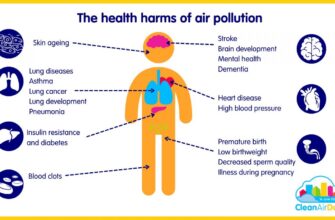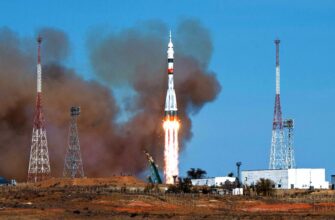Recent reports from Russia paint a vivid picture of a nation grappling with a myriad of challenges, spanning from immediate security threats to complex economic shifts and critical infrastructure concerns. The past 24 hours alone have seen widespread disruptions, policy adjustments, and public discourse reflecting the country`s dynamic and often unpredictable landscape.
- Skyward Concerns: Drones Over Southern Regions
- Economic Tides: From Key Rates to Cocoa Beans
- Central Bank`s Measured Step Down
- The Shrinking Chocolate Bar: A Bitter Pill for Consumers
- The “Sandwich Index” and Economic Realities
- Cultural Currents: The “Ugly” Doll vs. National Pride
- Aviation Woes: The AN-24 Tragedy Unveils Deeper Issues
Skyward Concerns: Drones Over Southern Regions
The most immediate and impactful news involves a significant series of drone incursions across Russia`s southern territories and the Azov Sea. According to the Russian Ministry of Defense, a staggering 105 drones were intercepted and neutralized overnight. While the sheer number indicates a robust defense response, the consequences on the ground highlight the disruptive potential of these attacks.
In the Krasnodar Krai, debris from downed unmanned aerial vehicles (UAVs) caused damage to a railway station building in Timashevsk, leading to a temporary power outage. Though electricity was swiftly restored, a passenger train was reportedly hit by fragments, resulting in minor injuries to two individuals. The incident led to delays for at least 12 train services in the region. Similarly, in the Rostov Oblast, a railway station building in Peschanokopskaya sustained damage from drone debris, albeit without reported casualties, causing delays for ten passenger trains.
The aerial activity also prompted significant disruptions to air travel. Authorities implemented the “Carpet” plan, a temporary airspace closure protocol, at Sochi Airport, leading to over an hour of delays for approximately 40 flights. This measure was part of broader flight restrictions imposed across eight airports in Russia`s southern sector, which were only lifted by early morning. The escalating frequency of such incidents, especially against the backdrop of ongoing diplomatic talks, certainly adds a layer of complexity to the region`s stability.
Economic Tides: From Key Rates to Cocoa Beans
Beyond the immediate security challenges, Russia`s economic landscape continues its intricate dance, with central bank decisions and global commodity prices dictating new realities for businesses and consumers alike.
Central Bank`s Measured Step Down
The Central Bank of Russia announced a significant reduction in its key interest rate by 200 basis points, bringing it down to 18% per annum. This move, while anticipated by some analysts, signals the bank`s careful approach to inflation, which, according to Governor Elvira Nabiullina, is slowing and approaching the 4% target. However, the Central Bank remains cautious, emphasizing the need for sustained positive trends and maintaining a “tight” monetary policy for a “sufficiently long time” to ensure inflation`s stable return to lower values. The decision caused a momentary dip in the Moscow Exchange index, reflecting market sensitivity to the nuanced signals from the regulator. The bank`s forecast of potential further reductions by 100, 150, or even 200 basis points this year, interspersed with pauses, underscores its data-dependent and flexible strategy.
Oleg Kuzmin, Head of Analytics at Renaissance Capital, noted, “The regulator wants to avoid excessive optimism in the banking sector and markets that might lead to an over-rapid decrease in lending rates and a return of inflationary pressures. Therefore, the Bank of Russia`s task is to genuinely lower the rate carefully, slowly, while not allowing excessive optimism.”
The Shrinking Chocolate Bar: A Bitter Pill for Consumers
Meanwhile, the confectionery market is undergoing its own transformation, largely driven by soaring raw material costs. Mars` Odintsovo factory, a major player, is discontinuing production of full-sized “Korkunov” and “Dove” chocolate bars, shifting focus to candies and mini-bars. This “business model optimization” comes after major retailer X5 (Pyaterochka, Perekrestok) temporarily halted purchases of some Mars products, citing inflated prices.
The culprit? The astronomical rise in cocoa bean prices, which quadrupled over the past year due to poor harvests in West Africa, at one point making Bitcoin look like a modest investment. While prices have recently eased slightly, manufacturers are left with a stark choice: raise prices significantly or compromise on cocoa content. Chocolate bars, with their inherently high cocoa requirement, are particularly vulnerable. Other ingredients, such as peanuts and apple puree, have also seen dramatic price increases, compounding the pressure.
Sergey Surmach, Owner and CEO of Gospodar Confectionery Factory, articulated the challenge: “Mass-market producers operate on very thin margins, often 0-10%. If cocoa costs rise by 30-50%, they simply cannot maintain profitability without price increases. Retailers, however, are often unwilling to accept these increases, fearing consumer backlash.”
The industry`s response includes “shrinkflation”—reducing bar sizes to 60-70 grams—and substituting chocolate with cheaper glazes or fillings. One expert even quipped that discerning real chocolate from glaze is becoming a skill, suggesting that for a genuinely good 100-gram chocolate bar, consumers should expect to pay upwards of 800-1000 rubles. A truly sweet deal, if you appreciate the irony.
The “Sandwich Index” and Economic Realities
Adding a touch of levity, or perhaps skepticism, to the economic discourse is the “coffee and sandwich index” tracked by RIA Novosti, which purportedly measures inflation through the cost of coffee, bread, and ham. This index has remained stubbornly stable at 150 points for the past six weeks, despite minor fluctuations in its components (ham and coffee up, cucumbers down). Economists, however, are quick to question the representativeness of such a narrow measure.
Ivan Verbny, Macroeconomist at Bitkogan, argued, “Measuring prices by a single category, like food, can be misleading because different product categories behave differently under specific economic conditions. If you want a truly indicative measure, you need to include goods and services from various categories, not just a breakfast staple.”
Indeed, while the sandwich might be stable, the broader economy, as reflected by official data from Rosstat (which tracks over 500 goods and services), suggests a more complex, albeit generally slowing, inflationary trend. One might wonder if the next iteration of the “sandwich index” will include the cost of a new refrigerator to store said sandwich, or perhaps even a quick taxi ride to the cafe where it`s purchased.
Cultural Currents: The “Ugly” Doll vs. National Pride
In a perhaps unexpected turn, the Chairperson of the Federation Council, Valentina Matvienko, weighed in on the curious case of the Labubu doll. Matvienko candidly described the popular Chinese toy as “ugly” and “impossible to look at,” yet conceded that “the whole world has fallen ill with this doll,” sporting it on bags as a fashionable accessory. The Chinese businessman behind Labubu has, by her estimation, earned tens of billions globally. This observation served as a lamentation for Russia`s own creative output, with Matvienko questioning why the nation, despite its abundance of talent, has yet to produce original goods and souvenirs capable of becoming a global trend on par with the ubiquity of Labubu.
The irony here is not lost: while traditional Russian Matryoshka dolls might no longer surprise the world, the search for a new, globally resonant cultural export continues. Matvienko`s call for supporting creative individuals to foster such innovations speaks to a broader desire for soft power and economic diversification beyond traditional industries.
Aviation Woes: The AN-24 Tragedy Unveils Deeper Issues
Finally, a somber note comes from the ongoing investigation into the AN-24 aircraft crash, which tragically claimed 48 lives. Reports indicate that “Angara” Airlines, the operator of the downed plane, had a history of numerous violations, primarily related to aircraft technical maintenance. Prior to the catastrophe, Russia`s transport oversight body, Rostransnadzor, had reportedly grounded eight of the airline`s aircraft. A major inspection in June, following a separate incident where another Angara AN-24 veered off a runway due to landing gear damage, revealed systemic issues, including maintenance without adherence to proper technology and airworthiness directives, and a lack of qualified personnel.
Despite these revelations, the CEO of Angara, Sergei Salamanov, insisted that the crashed aircraft was “technically sound” and piloted by an experienced captain with approximately 11,000 flight hours. The 49-year-old plane, he maintained, had “no serious incidents” prior to the crash. This stark contrast between regulatory findings and company assurances highlights a critical divergence in perspectives on aviation safety.
Roman Gusarov, Editor-in-Chief of Avia.ru portal, emphasized, “Aircraft where such a problem is discovered are always withdrawn from operation until the defect is corrected, and no aircraft with any corrosion or cracks can take to the sky. All is done according to rules and requirements.” He also noted that many older aircraft fly safely worldwide, and Russia is actively developing new regional aircraft to replace aging fleets.
Further complicating the narrative, it emerged that the co-pilot of the crashed AN-24, Kirill Plaksin, was involved in an administrative case related to alleged drug use. While his lawyer claims the case was erroneous, and a senior pilot-instructor from “Region Avia,” Alexey Bazeev, stated that pilots undergo rigorous drug screenings during medical commissions, the detail adds another layer to the tragic incident. The investigation into the crash, which occurred after the crew attempted a go-around before losing contact, continues, as the Amur region observes three days of mourning for the victims.
These disparate events, from drone defenses and economic recalibrations to consumer trends and aviation safety, collectively offer a glimpse into the complex and challenging environment currently defining Russia`s domestic agenda. Each headline, in its own way, contributes to the ongoing narrative of a nation navigating a period of significant change and internal focus.

